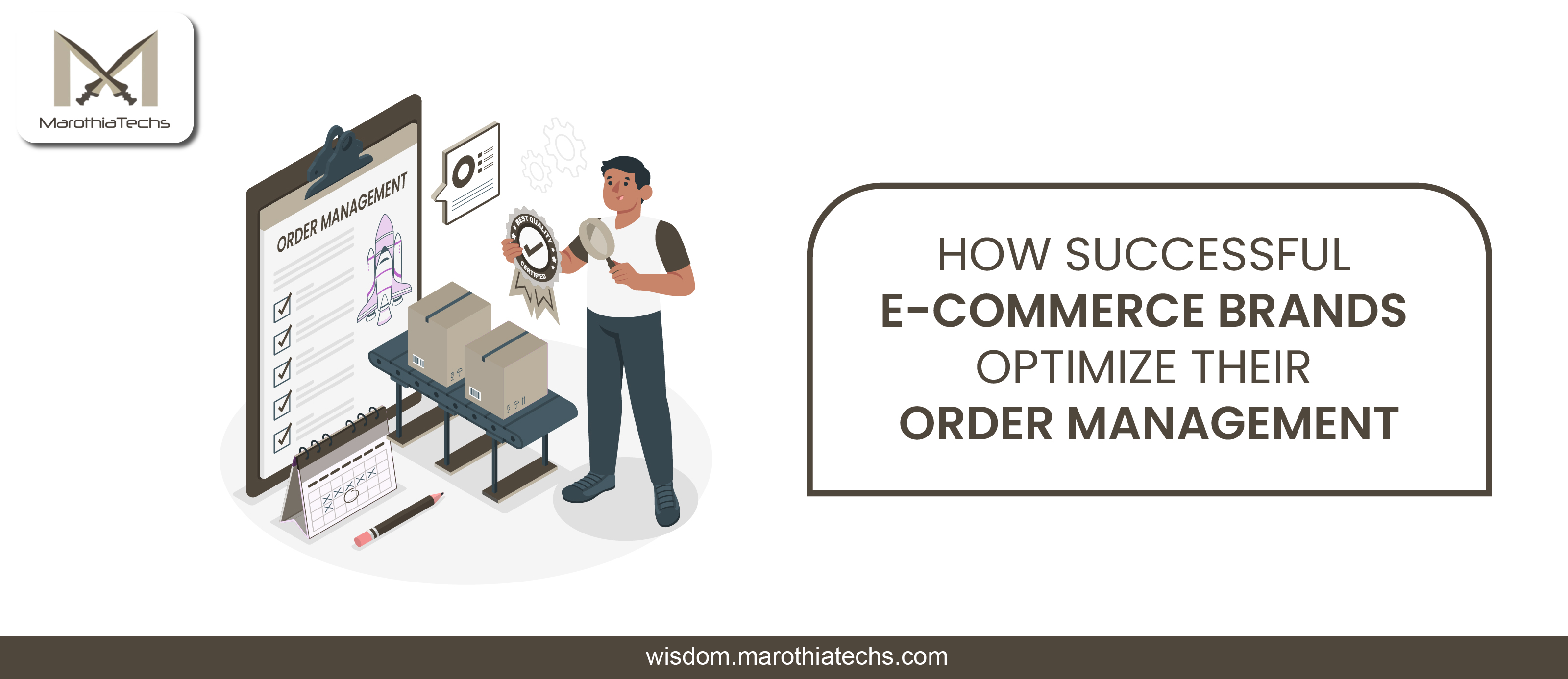With customers demanding faster deliveries, better tracking, and seamless returns, businesses must find ways to stay on top of their operations.
An effective Order Management System (OMS) plays a vital role in managing these complex processes. It’s a tool that helps businesses stay organized and meet customer expectations while keeping things running smoothly behind the scenes.
But what exactly is an OMS, and how do successful e-commerce brands use it to improve their order management?
Let’s explore how these brands use an Order Management System to streamline their operations and deliver an exceptional customer experience.
What is an Order Management System?
An Order Management System (OMS) is a software tool that tracks and manages the entire order process, from when a customer places an order to when it’s delivered to their door.
It connects and coordinates various business functions such as inventory management, order processing, shipping, and customer service.
In simple terms, it’s a centralized platform where everything related to orders can be managed in one place.
For e-commerce businesses, an OMS simplifies operations, reduces errors, and helps create a smooth experience for both customers and staff.
Key Features of an Effective Order Management System
For an OMS to be truly effective, it needs to have certain features that make it easy to use and beneficial for the business. Here are some key features of a good Order Management System:
- Centralized Inventory Control: A well-organized OMS keeps track of inventory in real-time, helping businesses avoid issues like overselling or running out of stock.
- Order Tracking: Customers want to know where their orders are at all times. A good OMS provides real-time tracking updates, so businesses can keep their customers informed.
- Automation: Repetitive tasks like generating invoices or sending shipping confirmations can be automated, saving time and reducing errors.
- Integration: An OMS should easily integrate with e-commerce platforms, payment gateways, and shipping services to ensure all aspects of the order process are connected.
By having these features in place, an OMS helps businesses stay organized and deliver a better experience to their customers.
How Leading E-Commerce Brands Optimize Their Order Management
Top e-commerce brands don’t just use an Order Management System; they use it to optimize their entire operation. Here’s how successful brands get the most out of their OMS:
- Managing Multiple Sales Channels: Many e-commerce brands sell on multiple platforms, such as their website, marketplaces like Amazon, or social media channels. An OMS helps them manage orders from all these sources in one place, making it easier to track sales and inventory.
- Scaling with Ease: As businesses grow, so does the volume of orders. A good OMS is scalable, meaning it can handle increasing numbers of orders without causing disruptions or delays.
- Focusing on Customer Experience: By ensuring that orders are processed quickly, accurately, and shipped on time, brands can create a positive experience that keeps customers coming back.
These optimizations help brands not only handle growth more effectively but also improve overall efficiency and customer satisfaction.
Challenges Without an Order Management System
Without an Order Management System, e-commerce businesses can face several challenges that can harm their operations and customer satisfaction:
- Inventory Mistakes: Without a centralized system to track inventory, there’s a higher chance of running out of stock or overselling products, both of which can lead to disappointed customers.
- Manual Errors: When processes are handled manually, mistakes are more likely to happen, leading to delayed shipments or incorrect orders.
- Inefficient Processes: Managing orders across multiple tools and systems can be slow and lead to mistakes, meaning more time spent on resolving issues than focusing on growth.
- Lack of Visibility: Without an OMS, it’s harder to see where orders are in the process, making it difficult to provide updates to customers.
These challenges highlight why having an OMS is so important. It keeps everything in one place and makes managing orders much easier.
How to Optimize Your Order Management with an OMS
If you want to take control of your order management, here are some practical steps to optimize your system using an Order Management System:
- Review Your Current Process: Start by evaluating your existing order management process. Look for any bottlenecks or areas that could use improvement.
- Choose the Right OMS: Not all OMS platforms are the same. Choose one that fits your business size, product range, and specific needs.
- Integrate with Other Tools: Your OMS should work well with your e-commerce platform, payment processor, and shipping service. This creates a more connected system that’s easier to manage.
- Automate: Automate repetitive tasks like sending out order confirmations, updating stock levels, and creating shipping labels to save time.
- Track and Adjust: Keep an eye on how your OMS is performing. Regularly review the system to see where improvements can be made.
By following these steps, businesses can ensure that their order management is running efficiently and that they’re providing the best possible experience to their customers.
Why an Order Management System is a Good Investment
For e-commerce businesses, investing in an Order Management System is a smart decision. Here are a few reasons why:
- Saves Time: Automating processes like invoicing and shipping saves time and reduces the risk of human error.
- Reduces Costs: By avoiding inventory errors and improving efficiency, businesses can lower costs related to returns, stockouts, and shipping delays.
- Improves Customer Satisfaction: With faster processing times, better order tracking, and fewer mistakes, customers are more likely to have a positive experience.
- Supports Growth: As your business grows, so do your order volumes. An OMS scales with your business, helping you handle more orders without a hitch.
In a competitive market, having an OMS is no longer a luxury; it’s a necessity for businesses that want to stay ahead.
Order management is a critical part of any e-commerce operation. By using an Order Management System, businesses can improve efficiency, reduce mistakes, and provide a better overall experience for their customers.


Leave a Reply